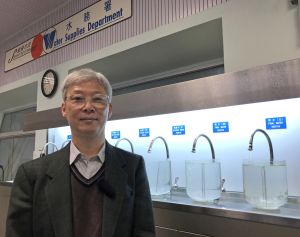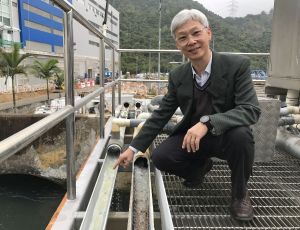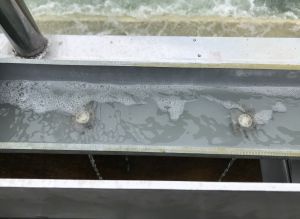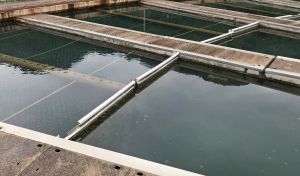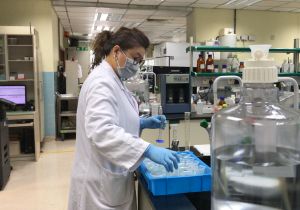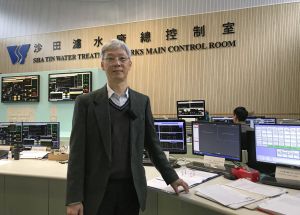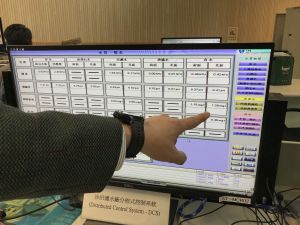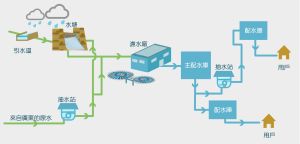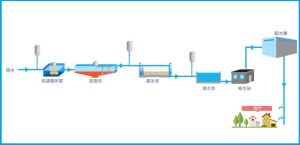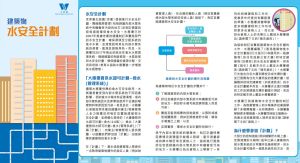Ensuring drinking water safety in Hong Kong
|
Water is an essential element of our daily life. To ensure that it is clean and wholesome, all raw water in Hong Kong undergoes rigorous treatment and disinfection processes at the water treatment works of the Water Supplies Department (WSD) before being supplied for public consumption. This time, I have particularly invited the Chief Waterworks Chemist of the WSD, Mr KWOK Yau-ting, Kelvin, to talk about the water treatment processes, and explain how water treatment works secure water safety and shoulder the responsibilities to provide a safe and reliable water supply. Raw water undergoing rigorous treatment Currently, Hong Kong’s water comes from rainfall collected in local catchments and Dongjiang in Guangdong Province of China. For raw water to become drinking water, it has to undergo a series of rigorous treatment processes. The Chief Waterworks Chemist of the WSD, Mr Kelvin KWOK, said at the Sha Tin Water Treatment Works earlier when introducing the water treatment processes that raw water is pre-treated by dosing with a chemical named alum to coagulate impurities to facilitate sedimentation. Other chemicals may also be added into raw water if necessary, such as powdered activated carbon for removing odour. Water then passes to clarifiers for removal of relatively large particles and impurities. Although no impurities are visible to the naked eye, the clarified water will further flow into filters for filtering out the more finely divided particles. The filtered water is disinfected by adding chlorine to kill pathogens including bacteria and viruses, then hydrated lime is added to control the pH so as to protect the water distribution network. To enhance dental health of the general public, a carefully-controlled dose of fluoride is added to drinking water by water treatment works. Level of residual chlorine in drinking water increased in light of the latest situation of the epidemic One may not know that, apart from killing pathogens, adding chlorine during the water treatment processes can also maintain an appropriate amount of residual chlorine in the treated water to ensure that water is hygienic and free of pathogens on the rest of its journey from water treatment works to consumers. In light of the latest developments of novel coronavirus infection, the WSD has implemented a prudential measure by raising the residual chlorine level from 1 milligram (mg) per litre to around 1.2 mg per litre in the drinking water supplied by water treatment works to further safeguard water quality during the delivery and storing processes to keep it clean and hygienic. Still, the increased residual chlorine level is far lower than the guideline value of 5 mg or below per litre recommended in the Guidelines for Drinking-water Quality of the World Health Organization (WHO), which means the water is safe for drinking. According to Mr Kelvin KWOK, chlorine can effectively destroy the pathogens in raw water including pathogenic bacteria and viruses. That is why chlorination is used by water treatment works for disinfection. Comprehensive water quality monitoring programme There are now 20 water treatment works with a total current production capacity of around 2.7 million cubic metres per day to supply fresh water to a population of more than 7 million in Hong Kong. Besides implementing rigorous drinking water treatment processes, a comprehensive water quality monitoring programme has also been devised. Representative samples are taken by the WSD from different parts of the water supply and distribution systems for physical, chemical, bacteriological, biological and radiological analyses to ensure that the quality of the water supplied complies with the Hong Kong Drinking Water Standards, which is the Guidelines for Drinking-water Quality recommended by the WHO. Mr Kelvin KWOK said that more than 170,000 samples are taken from the receiving point of Dongjiang water, catchments, impounding reservoirs, water treatment works, service reservoirs, water distribution network and consumers’ taps and tested by the WSD each year. Among which, all the drinking water samples comply fully with the Hong Kong Drinking Water Standards and are safe for drinking. Apart from taking water samples, on-line Water Quality Monitoring System is also used during the water treatment processes to monitor water quality continuously. Actively promoting Water Safety Plan for Buildings To ensure drinking water quality, proper management and cleansing of the internal water supply systems of buildings is very important. Building owners and property management agents must conduct proper maintenance of the systems and regular cleansing of water tanks. The WSD has been actively promoting the Water Safety Plan for Buildings (WSPB) since 2017 to encourage the development and implementation of an effective management framework for the internal water supply systems in buildings including carrying out risk assessments and corresponding enhancement measures, regular checking, inspection and maintenance. The department has also issued relevant guidelines and templates to assist building owners and property management agents in implementing the plan. The Government has planned to allocate $440 million over the coming five years to subsidise eligible building owners and property management agents to implement the WSPB for their buildings, which includes the implementation of mitigation measures such as improving the water supply systems of buildings. The Government will provide details of the subsidy scheme in due course. |
|
16 February, 2020
Back